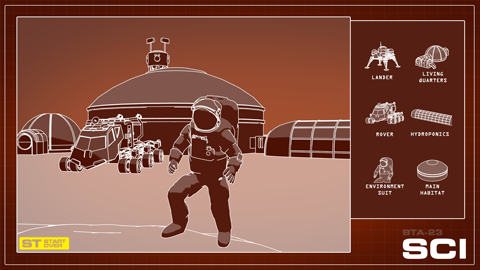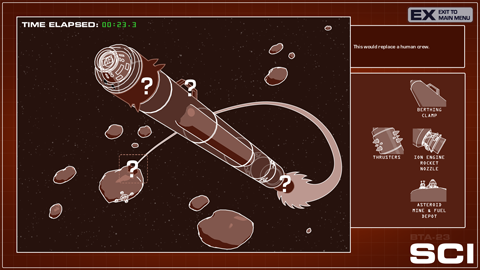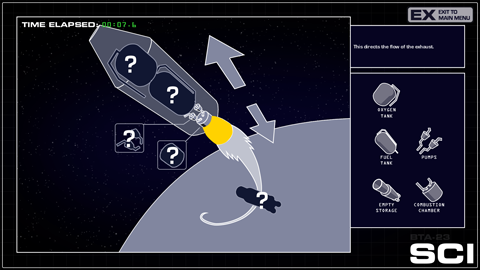Exploring the "final frontier" in the 21st Century
Be the Astronaut is a great way to introduce the principle concepts of 21st century space exploration – and it's hugely appealing to kids ages 5-15. (It's like a sophisticated "Oregon Trail", designed for the Xbox and Playstation generation.)
The Roanoke Times discusses the exhibit, currently showing at the Science Museum of Western Virginia, and says:
the show offers interactive graphics and games meant to demonstrate how space exploration really works. Here, there’s no warp speed or hyperspace jump that lets you bypass the laws of physics.
A futuristic space transport system in Be the Astronaut revolves around “In-Situ Resource Utilization” (ISRU).
Based purely on principles of physics and economics, it will be far easier, cheaper and safer to produce vital fuel, water and oxygen from compounds that are available on the Moon (or from asteroids like Bennu). ISRU will likely play a pivotal role in future exploration of our solar system, because it overcomes the great hazards and costs of launching these resources out of Earth orbit.
First, you learn about the basic concepts and challenges in a 2-D game – in the NAV and SCI stations.
Then experience a high definition, 3D simulation in the FLY station: drive a rover in 1/6 gravity down into the Moon's Peary and Whipple craters, on a steep haul road full of switchbacks and potential hazards. Fly to Mars or Ceres - but your spacecraft must intercept and successfully refuel with automated drone tankers that were created with ISRU, and launched into deep space orbit months or years ahead of your journey.
Creating resources in the "final frontier"
The Moon’s north and south poles are shrouded in darkness and pockmarked with craters (some miles deep). Valuable compounds can be made into resources from the ice in these craters and also from lunar regolith - the dust, soil and rock that cover the Moon's surface - which might eventually be used for 3D printing in space.
Yet the Moon has no atmosphere, its gravity is a mere fraction of Earth’s, and it has huge temperature variations and other harsh conditions. So how might you access, mine, utilize and safely transport these potential resources?
Be the Astronaut uses Eureka Exhibits' distinctive approach of unifying education with an immersive exhibit experience, where visitors must be active participants in the process. That's the logic behind the game's human-driven lunar rovers that must navigate a hazardous haul road to reach the ISRU facility deep inside a dark crater, with structures designed for hospitable living conditions.
Of course the eventual reality may be altogether different - but the overall goal of Be the Astronaut is to plainly demonstrate the principles and challenges that we face in the "final frontier". A few examples of Eureka Exhibits' sketches and storyboards show the creative process of constructing a virtual haul road, and this video shows the driving approach to the ISRU facility.




